Marchés
Lors de la conception d’une intervention humanitaire et de la prise de décisions quant à l’utilisation des transferts monétaires, l’analyse générale des options de réponse doit inclure une analyse de marché. Il est prouvé qu’offrir un soutien ciblant le fonctionnement des marchés accélère la reprise et accroît la résilience dans les zones affectées par une catastrophe.
De nombreuses organisations ont investi dans la mise au point d’outils visant à faciliter l’analyse de marché et réfléchissent à la mise en place de programmes basés sur les marchés plus holistiques. Elles envisagent des interventions tirant profit du marché (basées notamment sur des transferts monétaires aux populations affectées), ainsi que des interventions soutenant directement les marchés (comme l’octroi de subventions conditionnelles aux vendeurs/euses pour la remise en condition du marché).
Initiatives associées
Contenu associé

1.2 Introduction à l’analyse de marché
Cours
Ce cours de 30 minutes offre une introduction à l’analyse de marché pour les contextes d’urgence. Il contient des contributions d'experts dans ce domaine. Ce cours a été développé en collaboration avec l'International Rescue Committee et le CALP Network et grâce au financement d’USAID/OFDA et de l’Agence Suisse pour le Développement et la Coopération. Il est destiné aux...

2.4 Un guide pratique pour l’analyse de marché
Cours
Ce cours en ligne de 3.5 heures vise à fournir aux équipes qui conduiront des analyses de marchés en contextes humanitaires une compréhension approfondie de la théorie et des étapes à suivre afin de leur permettre de comprendre le pourquoi et le comment du processus à suivre. Les participants seront guides à travers un scenario d'analyse de marchés d'urgence. Ce cours s'appuie sur...
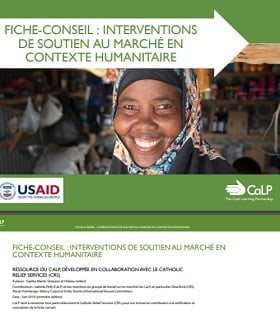
Fiche-Conseil : Interventions de soutien au marché en contexte humanitaire
Guides et outils
La fiche conseil définit le programme de soutien au marché en contexte humanitaire et le décrit dans la pratique. Elle permet aux praticiens humanitaires d’envisager systématiquement des interventions de soutien au marché, parallèlement à d’autres activités du programme. Le champ d’application comprend des interventions de soutien au marché axées sur l’offre/la disponibilité...
Thematic lead
Latest

Sector Indicator Guidance for Programming
Guidelines and Tools
The country Programming Instructions that were sent to EU Delegations and HQ services in mid-May 2012 for the programming period 2014-2020, requested the EU Delegations and services to provide, in the second phase of the programming process, a description of specific objectives for proposed priority...
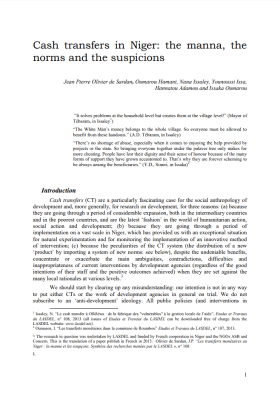
Cash transfers in Niger: The manna, the norms and the suspicions
Report
Cash transfers (CT) are a particularly fascinating case for the social anthropology of development and, more generally, for research on development, for three reasons: (a) because they are going through a period of considerable expansion, both in the intermediary countries and in the poorest countries,...
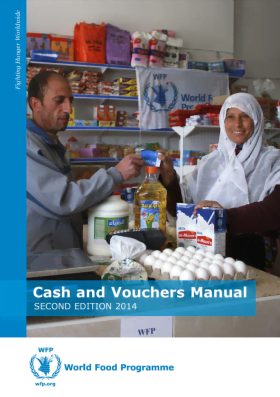
Cash and Vouchers Manual – Second edition
Guidelines and Tools
This second edition of the Cash and Vouchers Manual captures the latest corporately endorsed business processes and procedures, providing the most up-to-date tools (i.e. analytical, assessment, monitoring) that have been developed through close intra-departmental collaboration between Headquarters...

Directives pour la mise en oeuvre de transferts électroniques en situation d’urgence
Rapport
Les transferts électroniques sont une forme de transfert de valeurs qui s’appuient sur des systèmes de paiement numérique. Les très nombreux avantages que peuvent conférer ces transferts aux bénéficiaires aussi bien qu’aux organisations d’aide humanitaire ont été abondamment documentés....

Projet du Cadre Commun sur les Filets Sociaux Saisonniers au Nord du Mali, régions de Tombouctou et Gao – Document de capitalisation
Publication
Ce document de capitalisation s’adresse aux acteurs humanitaires et de développement, aussi bien gouvernementaux que non gouvernementaux oeuvrant au Mali à réduire la vulnérabilité et la pauvreté des populations, mais aussi pour ceux qui s’intéresse et cherche à se rapprocher des techniques de...
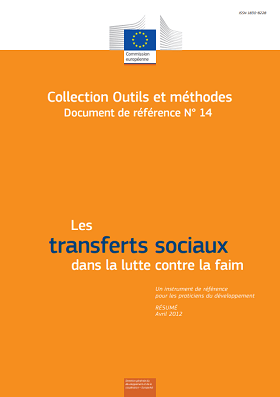
Les transferts sociaux dans la lutte contre la faim – Un instrument de référence pour les praticiens du développement – Résumé
Rapport
Le document de référence a été écrit en premier lieu pour les praticiens du développement et les administrateurs de l’aide opérant au sein des délégations de l’Union européenne et des bureaux pays des États membres. Il a pour but de fournir des connaissances de base — terminologie et...
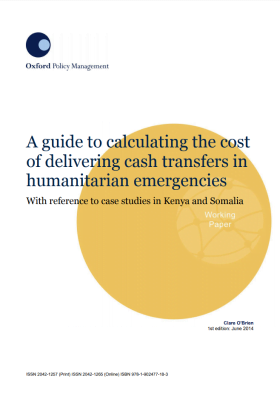
A Guide to Calculating the Cost of Delivering Cash Transfers in Humanitarian Emergencies – With reference to case studies in Kenya and Somalia
Report
The emergence of cash transfers as a viable alternative to in-kind aid – such as food or shelter materials – for households affected by humanitarian disasters has been documented for some years now. Under certain conditions, when local markets are able to accommodate increased demand and prices will...
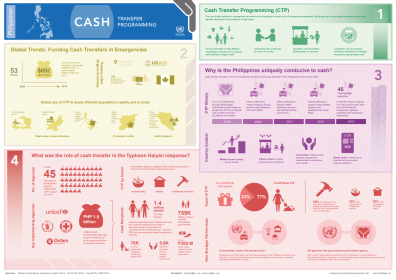
Cash Transfer Programming Infographic – OCHA
Presentation
OCHA (Office for the Coordination of Humanitarian Affairs) in the Philippines has produced a helpful infographic explaining the role of cash transfer programming in the Philippines Typhoon Haiyan response. The infographic explores several aspects of cash transfer programming, and examines the several...

Cash Transfers and HIV Prevention
Report
This paper proposes some initial principles on how to optimize HIV impacts of cash transfers, by encouraging targeting that: focuses on communities with high rates of new HIV infections, particularly acquired via sexual transmission; reduces local or community levels of economic inequalities between men...
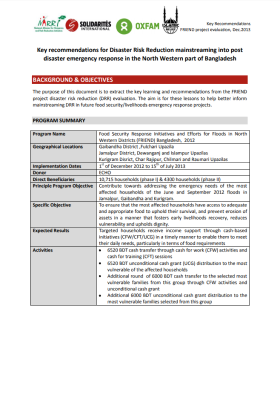
Key Recommendations for Disaster Risk Reduction Mainstreaming into Post Disaster Emergency Response in the North Western Part of Bangladesh
Policy paper
From December 2012 to July 2013, three NGOs from the National Alliance for Risk Reduction and Response Initiatives consortium (Solidarités International, Islamic Relief and Oxfam) implemented a Food Security response after flash floods that occurred in the North Western districts of Bangladesh. The...
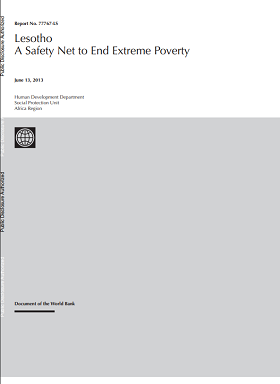
Lesotho: A Safety Net to End Extreme Poverty
Report
The objective of this study is to help the government to decide what role safety net and transfer programs should play in the coming 5 to 10 years. It seeks to answer three questions: Can increased spending on transfers accelerate poverty reduction in the medium to long term? Which groups and aspects of...
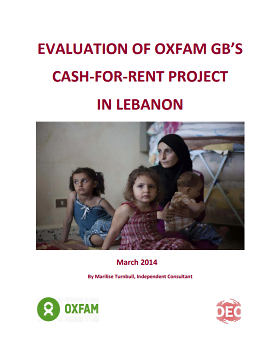
Evaluation of Oxfam GB’s Cash for Rent Programme in Lebanon
Report
In March 2013 the DEC launched an appeal to respond to the humanitarian crisis caused by the deepening civil war in Syria. Oxfam GB was allocated a total of £1,189,797 of the £12 million raised, of which it apportioned £237,951 to assisting Syrian refugees in Lebanon. This evaluation found that Oxfam...
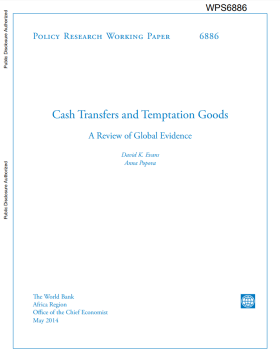
Cash Transfers and Temptation Goods: A review of global evidence
Report
Cash transfers have been demonstrated to improve education and health outcomes and alleviate poverty in various contexts. However, policy makers and others often express concern that poor households will use transfers to buy alcohol, tobacco, or other “temptation goods”. This paper reviews 19...
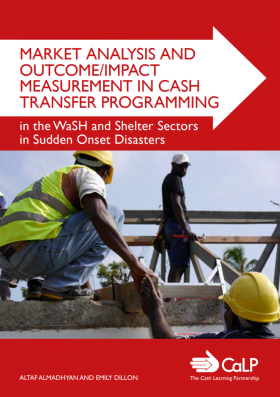
Economic Impact Study: Direct and Indirect Effects of the WFP Value-Based Food Voucher Programme in Lebanon
Report
This study examines the direct and indirect impacts of WFP’s e-card programme on the Lebanese economy. It is part of a broader United Nations initiative to assess the economic impacts of humanitarian assistance in Lebanon. The e-card programme is an important element of the international humanitarian...
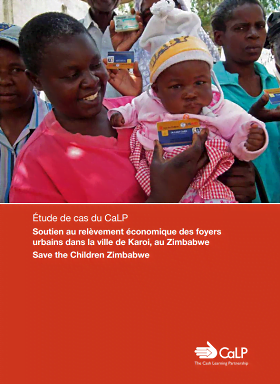
Étude de cas du CALP Network – Soutien au relèvement économique des foyers urbains dans la ville de Karoi, au Zimbabwe
Rapport
Dans la zone urbaine de Karoi, au Zimbabwe, Save the Children a allié des programmes d’argent contre travail au soutien des moyens de subsistance pour répondre aux besoins alimentaires immédiats et soutenir le relèvement économique des familles en situation de pauvreté. Le projet a utilisé des...

Document de Capitalisation Projet du Cadre Commun sur les Filets Sociaux Saisonniers au Nord du Mali, régions de Tombouctou et Gao.
Rapport
Ce document de capitalisation s’adresse aux acteurs humanitaires et de développement, aussi bien gouvernementaux que non gouvernementaux oeuvrant au Mali à réduire la vulnérabilité et la pauvreté des populations, mais aussi pour ceux qui s’intéresse et cherche à se rapprocher des techniques...
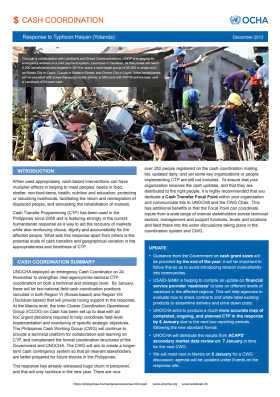
Response to Typhoon Haiyan (Yolanda)
Report
When used appropriately, cash-based interventions can have
multiplier effects in helping to meet peoples’ needs in food,
shelter, non-food items, health, nutrition and education, protecting
or rebuilding livelihoods, facilitating the return and reintegration of
displaced people, and stimulating the...

Emergency Relief Coordinator’s Key Messages On Typhoon Haiyan/Yolanda
Report
Emergency Relief Coordinator’s Key Messages On Typhoon Haiyan/Yolanda

CSC ATM and Card & WFP E-Card (electronic voucher)
Report
Explaining the 2 card system
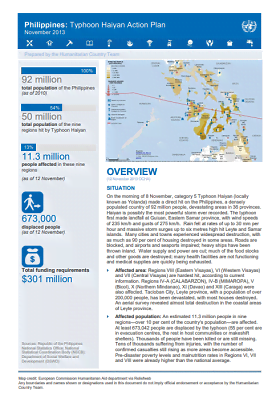
Philippines: Typhoon Haiyan Action Plan
Report
On the morning of 8 November, category 5 Typhoon Haiyan (locally
known as Yolanda) made a direct hit on the Philippines, a densely
populated country of 92 million people, devastating areas in 36 provinces.
Haiyan is possibly the most powerful storm ever recorded. The typhoon
first made landfall at Guiuan,...
